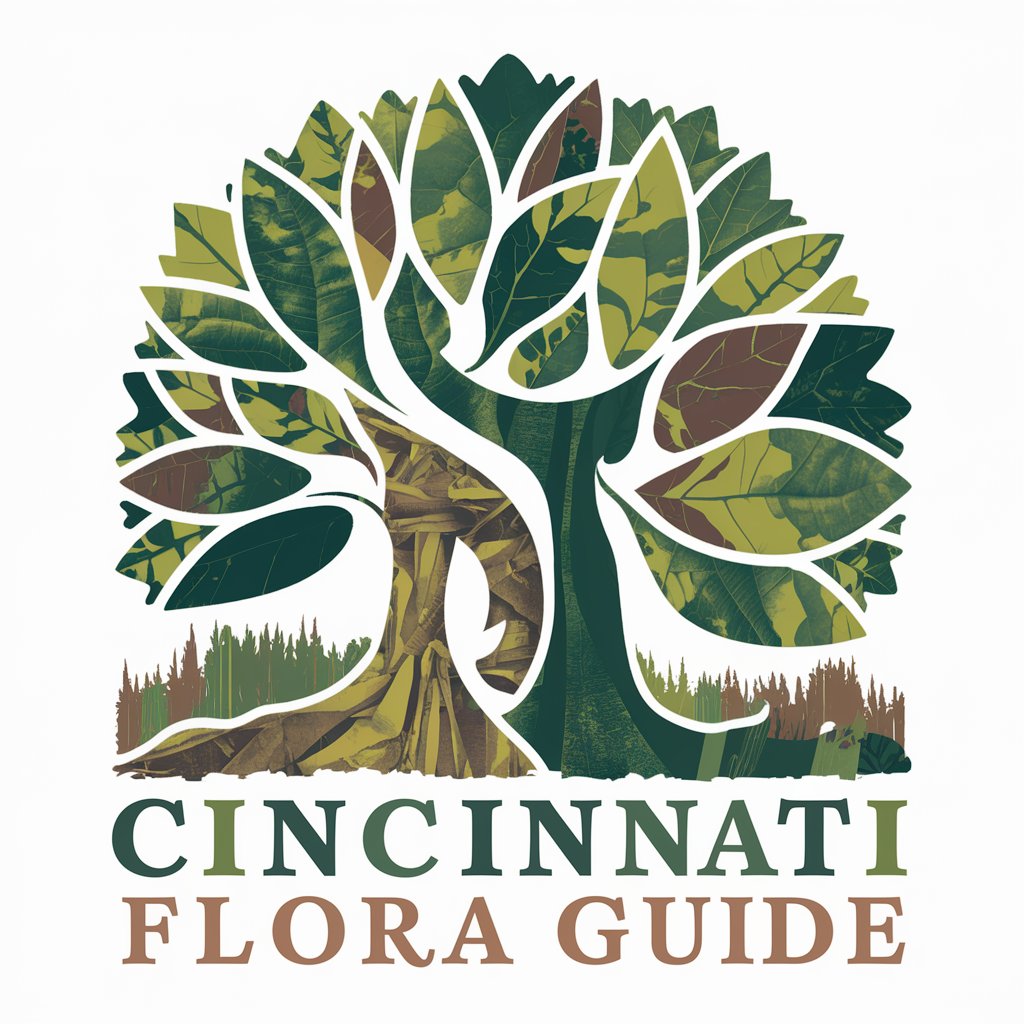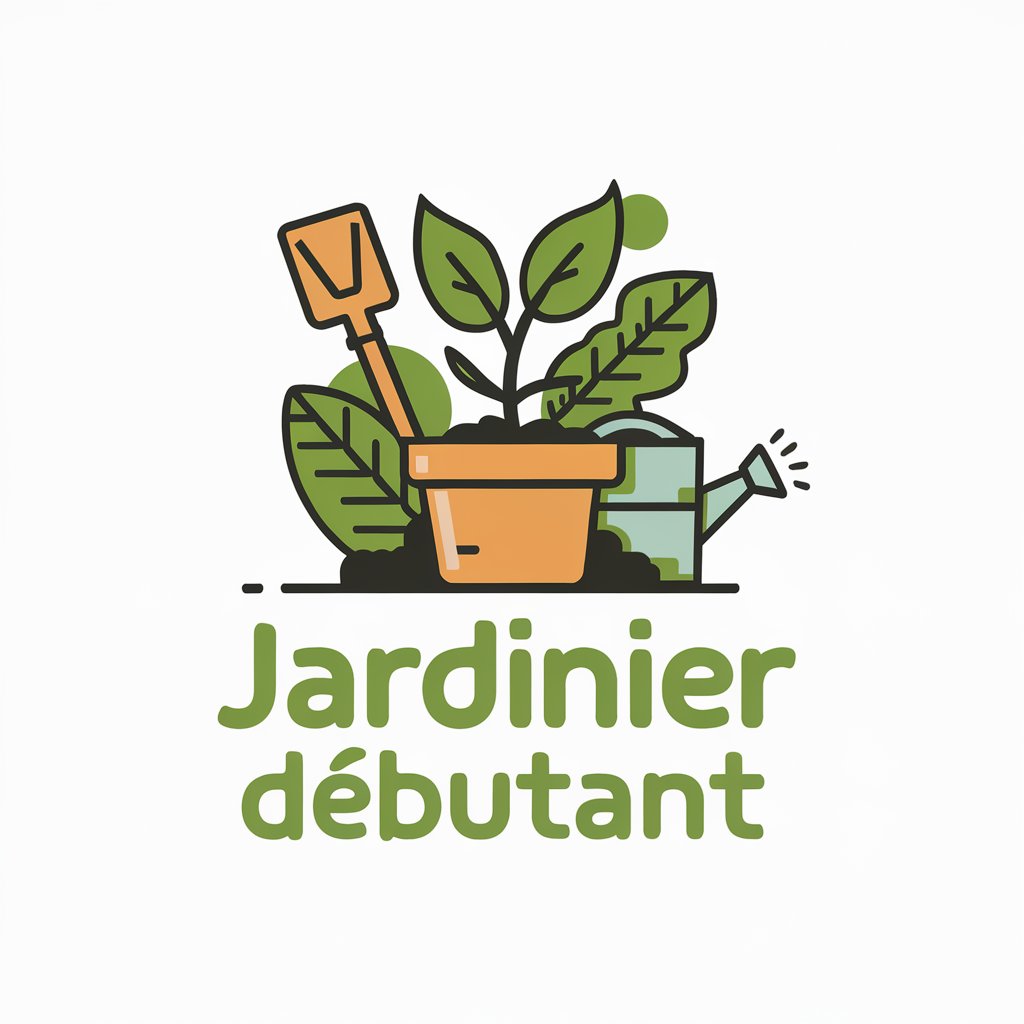Cincinnati Flora Guide - Guide to Local Flora

Welcome! Discover the beauty and benefits of Cincinnati's native flora with our expert guidance.
Empower your garden with AI-driven local plant wisdom.
What are the best native trees for enhancing local biodiversity in Cincinnati?
How can I effectively combat invasive species like honeysuckle in my Cincinnati garden?
Can you recommend native shrubs that provide good privacy in urban areas of Cincinnati?
What are the ideal planting times for native trees in Cincinnati?
Get Embed Code
Overview of Cincinnati Flora Guide
The Cincinnati Flora Guide is designed as a specialized tool focused on the native trees and shrubs of the Cincinnati area. Its primary purpose is to provide detailed information about identification, optimal planting times, and suitable environmental conditions for local flora. The guide also offers strategic advice on handling invasive species, like honeysuckle and poison hemlock, which threaten local ecosystems. Moreover, it suggests native plants for various practical uses, such as creating privacy screens or enhancing local biodiversity, supporting sustainable landscaping practices within the urban and surrounding areas. Powered by ChatGPT-4o。

Key Functions of Cincinnati Flora Guide
Plant Identification
Example
Providing detailed characteristics of the Redbud tree, such as its heart-shaped leaves and pink spring blossoms, to aid in identification.
Scenario
A user encounters a tree with unfamiliar features in a local park and uses the guide to confirm its identity and learn more about its ecological role.
Combatting Invasive Species
Example
Advising on removal techniques for Amur honeysuckle and replacement with native shrubs like Spicebush.
Scenario
A homeowner discovers Amur honeysuckle taking over their backyard and seeks guidance on safe removal and native alternatives to restore local plant diversity.
Recommending Privacy Plants
Example
Suggesting Eastern Redcedar for its dense foliage and year-round privacy.
Scenario
A resident looking to naturally shield their home from a busy street uses the guide to select and plant a row of Eastern Redcedar, benefiting from both privacy and wildlife support.
Target Users of Cincinnati Flora Guide
Home Gardeners and Landscapers
Individuals or professionals interested in cultivating native gardens or landscaping projects that promote local biodiversity and sustainable practices.
Environmental Educators and Students
Educators seeking resources to teach about local ecology and students undertaking projects or research on native species or environmental conservation.
Ecological Restoration Volunteers
Volunteers involved in local conservation efforts who need to identify native species and manage invasive plants effectively to restore natural habitats.

How to Use Cincinnati Flora Guide
Step 1
Visit yeschat.ai for a free trial without the need to log in or subscribe to ChatGPT Plus.
Step 2
Select the 'Cincinnati Flora Guide' from the available GPT options to start your session focused on local flora.
Step 3
Use specific questions or describe the plant characteristics you're interested in to receive tailored advice on Cincinnati's native plants.
Step 4
Explore the tool’s recommendations on planting times, ideal conditions, and sources for local plant procurement.
Step 5
Utilize the guidance on invasive species management to help maintain and enhance local biodiversity.
Try other advanced and practical GPTs
Lorehammer 40K
Craft and refine Warhammer 40K lore with AI precision.

Memory Techniques with Alexis
Visualize and Master Your Memory
Adventure Guru
Navigate Adventure with AI

AI Weatherman
Predicting Weather with AI Precision

Whiskey Wisdom
Savor Every Sip with AI-Powered Guidance

EE Score Assistant
Streamline Your Immigration Score Calculation

Grammer Teacher
Perfect Your Grammar with AI

Tommark drewniane
Powering Polish Product Pages with AI

Kreator-Gumax
Empowering content creation with AI

Jardinier débutant
Cultivating green thumbs with AI

Smart Shopper Assistant
Shop smarter with AI-powered insights

NutriGuru
Tailored Meals, Healthier You

Detailed Q&A About Cincinnati Flora Guide
What are some native trees recommended by the Cincinnati Flora Guide for urban planting?
The guide recommends several native trees ideal for urban areas in Cincinnati, including the Ohio Buckeye, Northern Red Oak, and American Hornbeam. These species are well-suited for city environments due to their tolerance to pollution and compact growth.
How can the Cincinnati Flora Guide help in identifying local plants?
The guide provides detailed descriptions of physical characteristics, preferred habitats, and seasonal changes, enabling users to accurately identify native and invasive plants found in Cincinnati.
What advice does the guide offer for controlling invasive species like honeysuckle?
The Cincinnati Flora Guide offers methods for mechanical removal, appropriate use of herbicides, and replacement with native plants to effectively control the spread of invasive honeysuckle.
Can the guide recommend plant species for privacy hedges?
Yes, it suggests planting dense, evergreen natives like Eastern Redcedar or deciduous shrubs like Spicebush which provide natural privacy and benefit local wildlife.
What additional resources does the Cincinnati Flora Guide provide for local gardeners?
The guide links users to local nurseries specializing in native plants, provides planting and care calendars, and offers tips on sustainable gardening practices that support local ecosystems.
